Review and photographs by Lanthanotus, edited by Suspsy
Plants and trees may not be a collector’s first choice of models to collect, and not only because there’s so few around. In general, humans feel more attracted to animals than towards plants despite the fact that we could still live well without keeping or even breeding (and feeding on) animals, but not without plants. But heck, they have no eyes or faces or expression! And steak tastes better than soy beans anyway! Enough sarcasm, those green companions of ours are way more curious and surprising than we might expect. The great David Attenborough wrote a wonderful book for the casual reader about The Private Life of Plants, so if you are interested, go find it here.
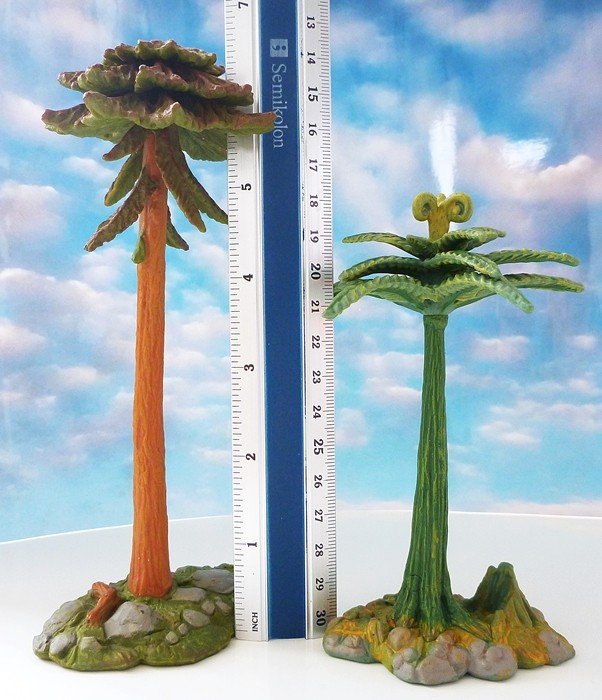
This review is dedicated to two prehistoric plant models made by Safari. So let’s start with the “Tree Fern” as it is written on the base of the model. No specific species is given, but the plant clearly resembles an extinct tree fern as recent relatives have far more filigree foliage and stems that are either as thick at ground level as on top or even a slight bit thicker at top. By contrast, the model shows a conical shape and buttress roots.
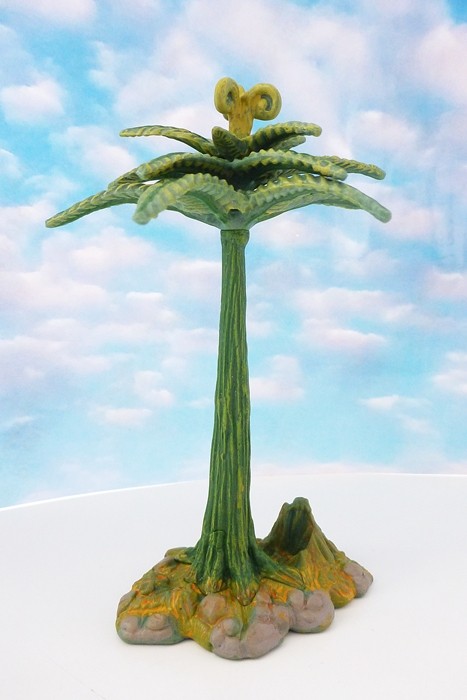

The tree fern is growing on rocky ground and right next to it are the stumpy remains of a former placeholder. Three levels of frond foliage and three fiddlehead fronds on the very top form the tree’s crown. The ground colour is green all over, but the base comes in an olive or military green whilst stem and foliage are made from a lively green. The paint job is simple, the rocks being coloured in a medium grey, the base’s crevices filled with a dark yellow. The stem is lightly touched with some light green, probably the same colour as is used for the foliage, just stronger there.
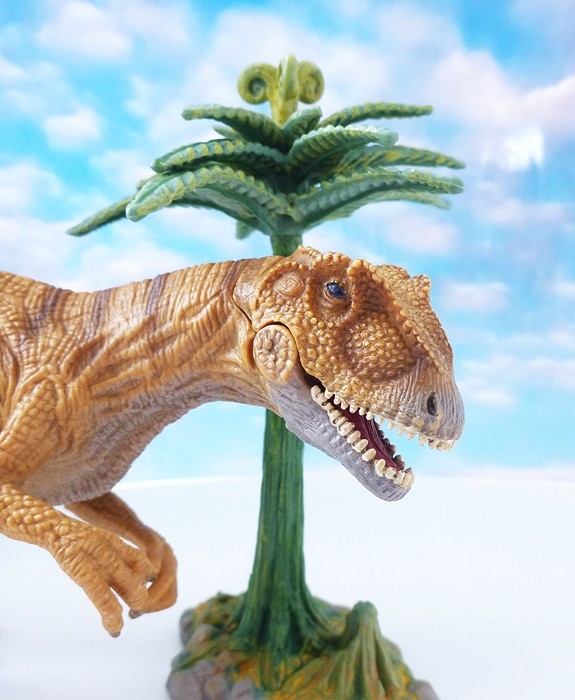
The second plant’s base claims to show an ‘Agathis Conifer.’ Yeah, I know what you’re gonna say: “Never, that is a Monkey Puzzle Tree, I’ve seen them in Walking with Dinosaurs!” You are right there, well, at least of what we know from either tree’s recent relatives. Agathis is a genus of trees better known as kauri trees and is nowadays native to New Zealand, Australia and western Oceania to Thailand. Kauri trees are thick-stemmed, big trees with leaves and crowns that more resemble dedicuous trees than conifers. However Agathis is part of the plant family of Araucariaceae and therefore a close relative to the tree commonly known as Monkey Puzzle Tree or Chilean pine. So, our conclusion here is that the model, despite being named an ‘Agathis Conifer,’ clearly resembles an Araucaria species as folks familiar with the Patagonian flora will know them: Cylindrical, slender stems of towering height (up to 80 metres) with an umbrella or mushroom like crown.
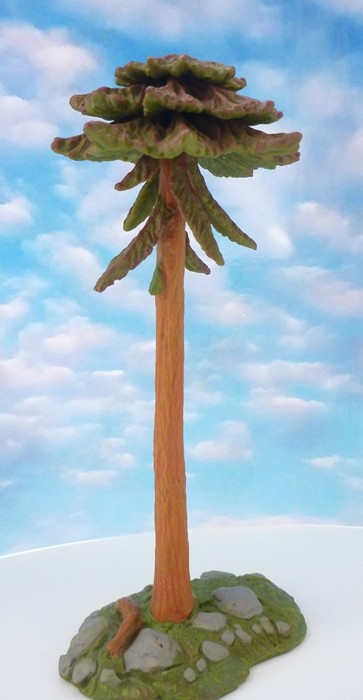
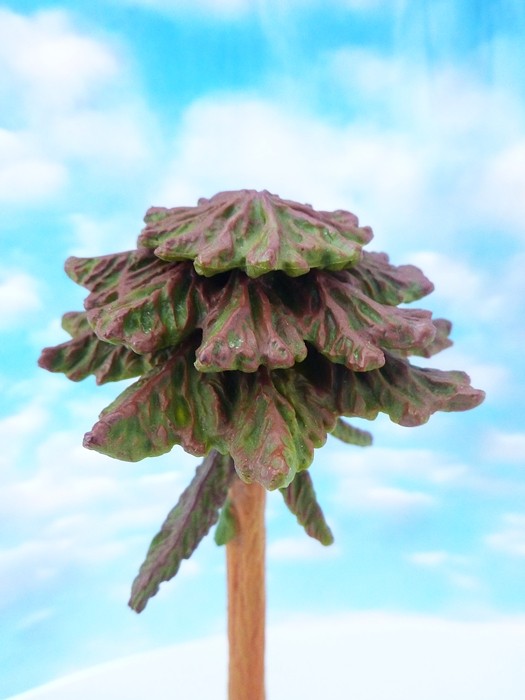
As the ‘Tree Fern,’ the Araucaria grows out of a rocky ground, a broken trunk, or very thick branch of an even bigger neighbour is laying next to the tree. The tall trunk is branchless up to great heights and besides a few remaining branches, most of the foliage is concentrated in the umbrella-like crown. As on the tree fern, the paint job is simple but effective. The rocks and stones are coloured in the same medium gray, a light green is used for the ground (whose base color is a dark grass green as the rest of the model), a light caramel brown for the trunk, and a dull reddish brown for the foliage.

Both models are reasonably well detailed. If one would want to compare them to dinosaur models, they would fall in line with Safari’s (which makes sense as they are made by that company) but lack the detailed liveliness of Papo’s. Still, they make for very nice stand alone models as well as background decoration–what will be their destiny in most cases. Both models can be bought for around $7 to $8 each, presumably best via the internet as most toy dealers don’t seem to bother offering plant models.
Disclaimer: links to Ebay and Amazon on the DinoToyBlog are affiliate links, so we make a small commission if you use them. Thanks for supporting us!




[…] retired) one of the prehistoric plants produced by Safari Ltd, the other two being reviewed here. I did not include it in the first review as my usual retailer didn’t have it in stock […]
Something funny about the fiddleheads on the tree fern–I think they’re opening backward. Usually they start out coiled toward the meristem, and unfurl and expand away from it. This model seems to show them doing the opposite, as though they were all going to wind up in a vertical column of new leaves.
I feel like there is supposed to be a link for the “Private Life of Plants” book. I’ve never read the book but I have the documentary on VHS. Wish they would release it on DVD. Great review though, it never occurred to me to review prehistoric plants but the more obscure organisms the better. Between these and the last couple fish reviews I’m really enjoying the biological diversity around here.
I’ve several of both of these to flesh out my display! I just need the 3rd plant, the cycad, but it’s hard to find. I’ve seen these two at several stores.
Indeed, the critical lack the smallest plant of Safari. I mean the cycad which is also a very detailed figure, as I said in size and smaller than the aforementioned figures high and I can admire in my collection and is unfortunately no longer in print.